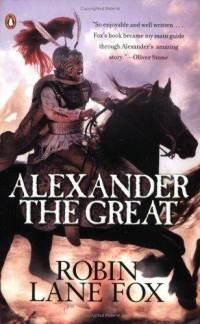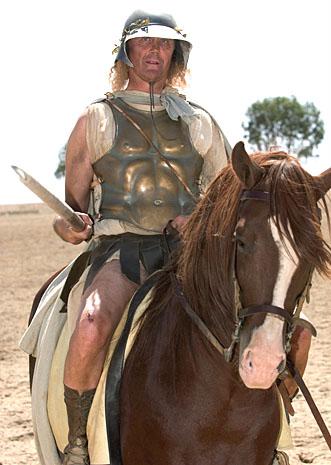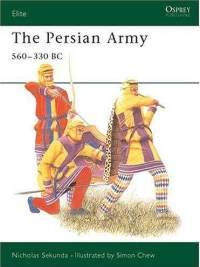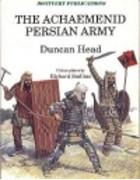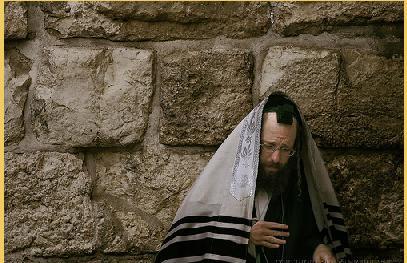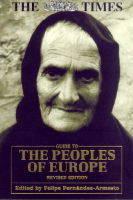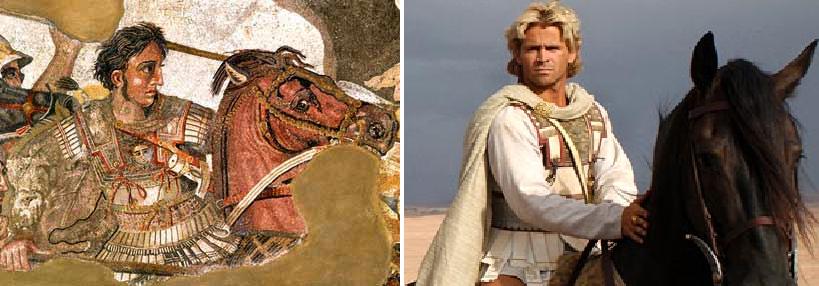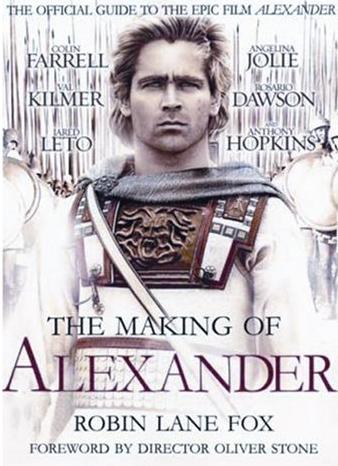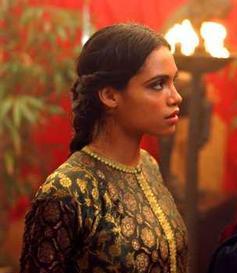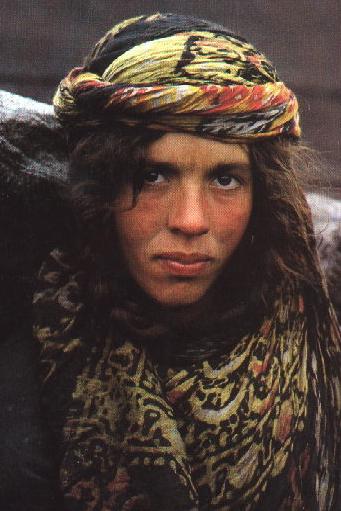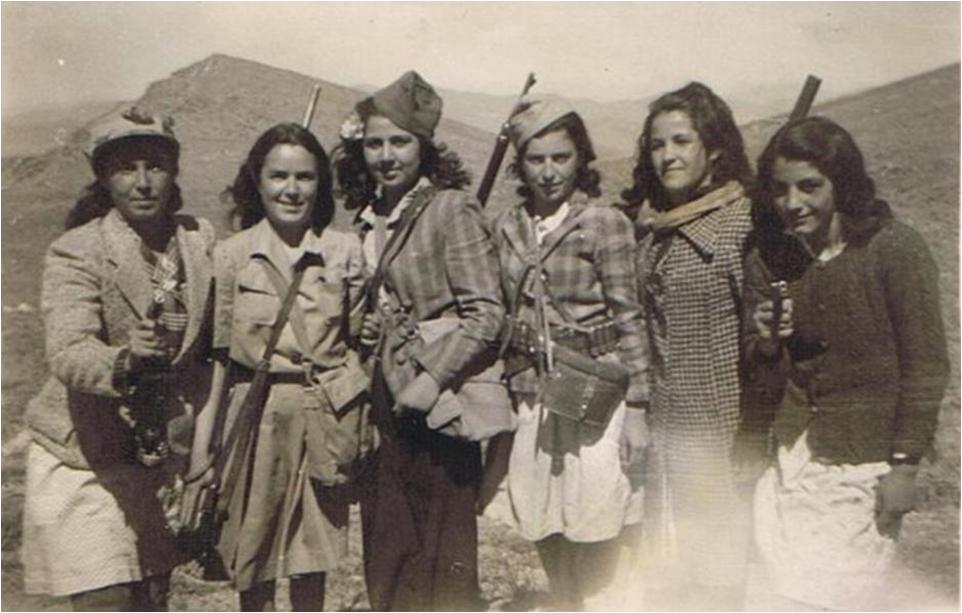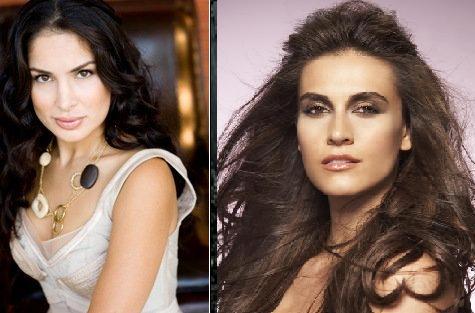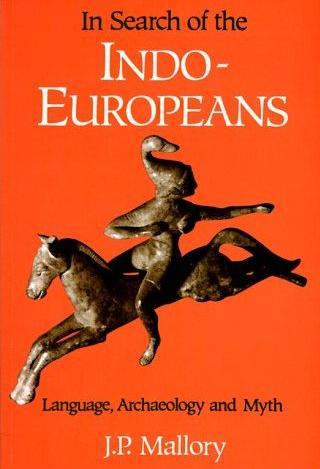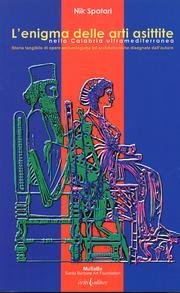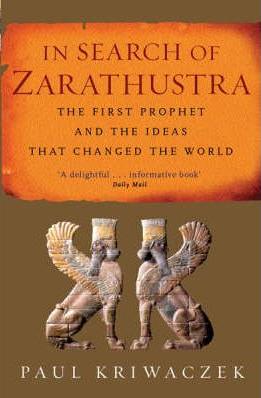NOTE: THIS ARTICLE IS BEING REVISED]
The article below was originally printed and posted in 2004. The version below has been updated on August 6, 2011.
===================================================================
Hollywood released one of its epic historical-movie blockbusters in 2004 entitled: Alexander, directed by the distinguished director Oliver Stone.
The movie endeavours to recreate the events of the Hellenic conquests and the downfall of the first Persian Achaemenid Empire. It is important to note however, that simply because a movie is high budget, casts high profile Hollywood actors and is directed by top ranking directors, does not make it flawless.
Beyond the entertainment value of Oliver Stone’s latest project, a number of serious errors do exist in the movie, many which may appear trivial. These “trivial” errors are nevertheless of consequence to Iranians, Greeks and all viewers in general. Movies are a powerful medium of leanring and persuation, irrespective of how vociforously we are told that the movie is simply “entertainment”.
Ironically, it was my Greek friends and colleagues who brought the flaws of Oliver Stone’s “Alexander” picture to my attention. There are a total of five overall errors that are listed and discussed below.
(1) The Battle of Gaugamela
Oliver Stone has relied on Dr. Robin Lane Fox, one of the world’s foremost experts in the area of Alexander and Hellenic Studies. Unfortunately, Dr. Fox is essentially a f Eurocentrist, a fact which is demosntrated in his writings and the Alexander picture he “advised”.
Thanks in large part to Robin Lane Fox’s tutelage. the movie promotes distortions against ancient Iran, Iranian culture, people and the Achaemenid army.
However it must be pointed out that the vast majority of modern-day scholars reject the type of Eurocentricism as espoused by Dr. Fox.
Robin Lane-Fox, a Classical (Greco-Roman) historian, is a Fellow of New College, Oxford and University of Oxford Reader in Ancient History. His writings and role in the 2004 movie “Alexander” has highlighted the power of Eurocentricism in academia and the media. Eurocentrist thinking, like all ideologically-driven biases, distorts historiography.
The Shahrbaraz Blog contians numerous Blogs that outline Dr. Fox’s distorted Alexandro-philia and his tendency to write with a patronizing and anger-ridden tone against ancient Iran. Dr. Fox’s book is a standard reference text in the area of Alexandrian Studies:
Title: Alexander the Great., Author: Robin Lane Fox, Publisher: Penguin, Dates: 1986, 1994 and 2011, ISBN: 0140088784
Despite excellent reviews of his book by critics and scholars, Dr. Fox does not understand the military of ancient Persia.
A typographical movie shot of the battle of Gaugamela, shows the Greeks advancing in ordered and disciplined ranks. In contrast, the armies of Darius III are shown as little better than an amorphous mob. This is a false image of the Achaemenid army. The Achaemenids used drums and musical instruments to direct the marching tactics of their troops in battle.
Second, the Achaemeneans used the decimal system, which was in fact, unknown to the Greeks of the period. Persian units were formed in legions of 10, 100 or 1000 or 10,000. A typical term was “Hezar-Patesh” (roughly equivalent to “leader of a thousand men”). Dr. Fox distorts this infromation and thnaks to his “advising”, the movie shows the Achaemenid army as a mob-like organization.
Dr. Fox also omits (or is unaware) that the Persians had developed a sophisticated system of heraldry and that their troops wore standard uniforms. The Greeks were certainly excellent fighters and were thoroughly organized, but this does not mean that the Persians were not. At the time, the Greeks were militarily superior with respect to armaments, tactics and military training.
Bringing Classicial Eurocentricism to life: Dr. Robn Lane Fox acts as one of Alexander’s companion cavalry in the 2004 Oliver Stone movie “Alexander”. It is interesting that Dr. Fox portrays Iranians as cartoon-like “Arabian nights” characters despite numerous Greek art works that show both Greeks and Iranians as sharing Caucasoid characteristics. (Source: Archaeology.org website).
This military imbalance changed with the coming of the Parthian and Sassanian cavalry. The Iranian Savaran (elite Cavalry) successfully halted and defeated many of the later Greek-Hoplite inspired Roman armies. Many Romans attempted to imitate Alexander and failed against Persia. These include Marcus Lucinius Crassus at Carrhae, Marc Antony at Tabriz (where he failed twice), Gordian III at Mesiche, Phillip the Arab near modern Syria, Valerian at Barbablissos, and Julian the Apostate in Mesopotamia.
I personally doubt that Hollywood will recreate these spectacular Roman defeats as these will challenge contemporary western notions of the Alexandrian legacy.
In addition, the contemporayr Iranian estbalishment has not emphasized the proud legacy of the Parthian and Sassanian Savaran.
Professor Fox’s elementary grasp of Iranian militaria should not inspire much confidence with respect to accurate portrayals of Iranians in general. You may wish to read the following books by Professors Sekunda and Head who are experts on the uniforms, dress and equipment of the ancient Greeks and Achaemenid Persians.
Title: The Persian Army: 560-330 BC, Author: Nick Sekunda, Publisher: Osprey Men at Arms Elite Series, Date: 1992, ISBN: 1855322501
Title: The Achaemenid Persian Army, Author: Duncan Head, Publisher: Montvert Publications, Date: 1992, ISBN: 1874101000
There are many errors with the uniforms portrayed as “Persian”. As you will see in these books, the colors and materials of Achaemenid Persians were invariably bright with a mix of shades of purple, Saffron, red dyes, shades of blue and green, mixed with darker browns (almost Burgundy) and black. These fashions and regalia were resuscitated during the Sassanian dynasty (226-651 AD). Only the Persian archers (and a few guards) are shown with some accuracy; the same cannot be said with respect to the other “Persians” of the movie set.
More puzzling is the “Arabesque” way in which ancient Persians are portrayed in this battle. I was shocked to see Arabian camel riders used to portray one of the vanguards of Darius III’s attack on Alexander at the battle scene. Arabs were simply auxiliary units in the Achaemenean army at the time, and were not a major factor. Camel troops were never a major battle order in the armies of Persia. I also noticed that an infantry troop of the Achaemenid advance guard was speaking in Arabic. Persian is not related to Arabic; it is an Indo-European language akin to the languages of Europe and India.
This may be the usual Hollywood habit however of portraying Iranians as Arabs, a topic we will re-visit later in this commentary.
(2) Confusing Persia with Babylon
It is very interesting that Professor Fox does not refer to the Achaemenid capitals in Susa, Maracanda (Samarqand), Media or Persopolis. The destruction of Persopolis by Alexander is a major event – instead the movie shows Alexander entering the city of Babylon, implying that this was the administrative capital of Persia. Babylon was simply another satrapy of the empire; not its capital. Babylon had already been incorporated into the Persian Empire in 539 BC by Cyrus the Great (559-530 BC). Why is Persopolis and its destruction not mentioned? There was also the destruction of the three major Zoroastrian texts by Alexander – also not referred to in the movie.
A possible reason for this may be found in Professor Fox’s interview with the distinguished journal “Archeology Today” (Riding with Alexander). Note the statement below, and how indicative it is of Dr. Fox’s lack of understanding of Classical Achaemenid Persia:
“We all understood that the separate “parts” of Oliver’s drama must be “color-coded” and … which could not totally depart from audiences’ expectations of Greek or Babylonian imagery“
Note the statement “expectations of Greek or Babylonian imagery“. What “expectations” are being discussed here?
But there is another dangerous point made by Fox – notice that he describes “Babylonian” and NOT Persian imagry. This ties into a trend among select scholars (usually in Assyriology, cuneiform and Baylonian studies) who view ancient Persia ar a derivative of Mesopotamian civilization. Put crudely, this is the view that ancient Persia is essentially a “clone: or “copy” of the Mesopotamian. This is interpreation is highly biased as it is categorically false.
The Iranian plateau has been host to complex civilizations of its own for thousands of years – these are in cases, more ancient than the Mesopotamian civilizations. For more on this topic consult the following:
- 6000 Year old Mysterious Ritual uncovered at Sialk
- Jiroft: The Forgotten Civilizational Legacy of Ancient Iran –جیرفت زادگاهی از تمدن جهان– (Video in Persian)
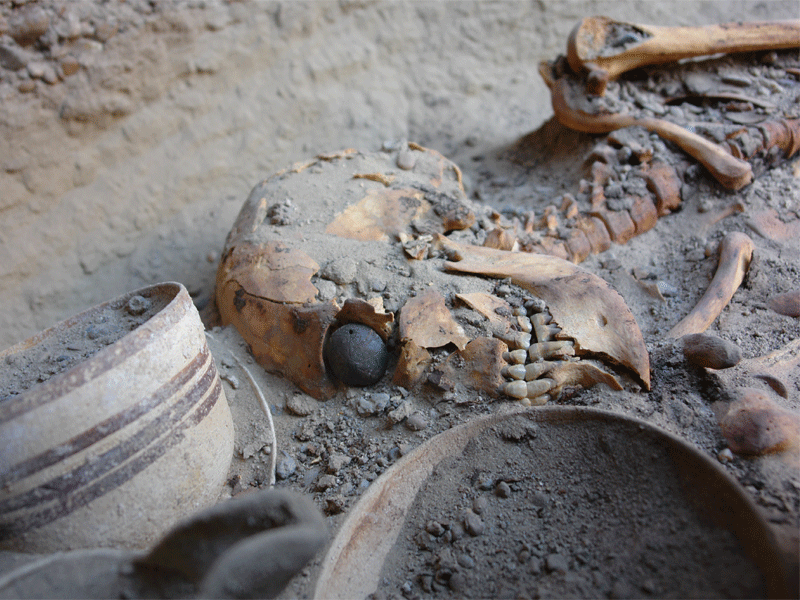
The case of the 5000-year-old Shahr e Sookhteh (Burnt City). Skeleton of a young woman from the Burnt City. Note artificial eye in the eye socket of the skull. The site of the Burnt City has also yielded numerous interesting finds including an ancient measuring ruler, backgammon game pieces and an animation device. Shahr e Sookhteh has no connection to other ancient civilizations in Western Asia although its close proximity to the site of Mohenjo-Daro (in present-day Pakistan) is possible. What is certain is that the Burnt City is not connected to the Mesopotamian plain and is independent of her.
Fox’s statement implies that Persia had no real arts worth mentioning, and that Persia is simply an extension of Babylon or at best interchangeable. This same view pervades with respect to historical revisionism against Cyrus the Great and the legacy of his humanistic policies.
- Koorosh Ahmadi: Vandalization of the Cyrus Cylinder article in Wikipedia by Eurocentirsts {pdf) (2010).
- CAIS News: Axis of Prejudice – from Khalkhali to Jona Lendering and their Crusade against Cyrus the Great (2009)
- Response to Der Spiegel Magazine’s Attack on the Legacy of Cyrus the Great (2008)
- Retort to Daily Telegraph article against Cyrus the Great; Posted originally in the Pasargard Foundation website (2008)
The West Wall in Jerusalem. After his conquest of Babylon, Cyrus allowed the Jewish captives to return to Israel and rebuild the Hebrew temple. It is believed that approximately 40,000 did permanently return to Israel. Despite Cyrus’ enlightened policies, a strong core of (mainly Assyriology-trained) academics have been attacking the history of Cyrus as “propaganda” .
As noted previously, Babylon was not a major power at the time of Alexander. Persian arts and architecture were an eclectic synthesis of indigenous (e.g Median, Elamite), Lydian, and Mesopotamian styles, including Babylonian. The city-palace of Persopolis is very distinct and cannot be crudely termed as Babylonian. It is, to put it mildly, shocking, that the treatment of Persian studies is addressed at such a shallow level by Professor Fox.
An important point must be made, especially with respect to the reason why Alexander was so violent in his conquest of Persia. The Greeks were simply taking revenge for the earlier invasion of their country by Darius the Great and his son Xerxes. The Greeks paid a heavy price for their battles at Marathon (490 BC), Thermopylae (17th September, 490 BC), Athens (27th September, 490 BC), Salamis (29th September, 490 BC), and Plataea (479 BC). It is significant that when Xerxes burned Athens, he ordered the sacred statues of the Greek gods to be removed and brought to Persia. The Greeks revered their gods and this Persian act was a national insult to them. Most contemporary Iranians are not aware of these facts. This certainly is not an excuse for what happened at Alexander’s time, but it does help put these events in perspective.
Although many Iranians demonize Alexander, the man did come to develop a great deal of respect for Persia. The more Alexander stayed in Persia, the more “Persian” he became, in manners and in dress. Alexander paid his respects at the tomb of Cyrus the Great and indeed saw himself as the heir of Cyrus. The Greeks so admired Cyrus the Great, that they saw his manner of government as a model. You may wish to read the Greek “Cyropedia”. If Aristotle made racist statements about the Persians (and this is shown in the movie), it must also be made clear that many Greeks also praised the Persians (see Xenophon or Plutarch in his discussion of the Parthian general Surena). A very positive aspect of the Alexander movie is that Alexander praises the “east” for its architecture and civilization. It is possible that Alexander was poisoned by some of his officers for becoming too “Persian”.
(3) The Blondism of Alexander
A very serious concern of the Alexander movie is the promotion of the idea of the “Nordicism” of ancient Greece. Put simply, this is the thesis that ancient Greeks were not only predominantly blonde, but “Nordic”, in the manner of present-day Scandinavians and Northern Germans. Nordicists have long argued, since the late 1700s, that the people of ancient and modern Greece are unrelated. Nordicism argues that the “ancient” Greeks were the “true” Greeks in contrast to the non-Nordic people of Greece today. This view is exemplified by the Austrian Hellenicist, Professor Fallmerayer, in the 1830s, who noted that “not a drop of pure Greek blood runs in the veins of modern Greeks…” To this day, Fallmerayer is recalled with bitterness and derision in Greece. It is worth noting that Fallmerayer never set foot in Greece in his entire lifetime. For further discussion on these issues you may wish to read:
Title: Guide to Peoples of Europe, (especially pages 207-216), Author: Felipe Fernandez-Armesto, Published: Times Books, Date: 1994, ISBN: 0-7320-0624-5
Fallmerayer’s analysis of Greece is not entirely correct. While true that the Ottoman Turks ruled Greece for 400 years and that previous Byzantine rulers (e.g. Emperor Nikopherous) had to import colonists from present day south Italy to help repopulate parts of Greece ravaged by wars, many of these “Italian” colonists were themselves ancient Greek, settled in regions such as Calabria and Southern France since the times of Darius the Great and earlier. In any event, there has always been a strong and predominant Greek element in areas such as the Peloponnesos.
As for the lack of mainstream Nordiscism in modern Greece, this has to do with the history of ancient Greece itself. Mainland Greece was already settled with indigenous Mediterranean peoples, such as the ancient Minoans, before the arrival of the Classical Greeks. Ancient Greece, like today, was a mixture of Mediterranean and “blonde” peoples.
This leads to a very crucial question: why have no Greek actors been selected to portray classical Greeks such as Alexander, Hephaestion, Ptolemy I, Olympias, King Phillip II, Cassander or Antiginous? For a review of the cast, click here…
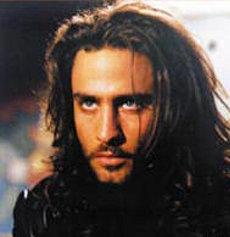
Israeli actor, Raz Degan who portrays Darius III. Predictably, Fox’s Darius III is virtually a cartoon-like character with no in-depth interpretation of who he could have been as a person or king.
If one were to use Classical Greek works of art (vases and statues specifically) as a standard for prototypical Greek physical appearance, one can then easily find a plethora of modern Greek actors and actresses today who can portray ancient Greeks. It is interesting as to why Oliver Stone did not select Hollywood actors of Greek descent or from mainland Greece.
Oliver Stone goes further however. Colin Farrell, a dark haired Irish actor, who plays Alexander, is portrayed literally, as a bleached blonde.
The notion of Alexander being Flaxen-haired or blonde is itself a matter of considerable doubt if not strong dispute. As noted by my friend George Tsonis, a Greek-Canadian and a scholar of Greek, Roman and Persian history, the Greek word for Alexander’s complexion is “Xanthenein” (fair). This description simply marks Alexander’s complexion as being fairer than the other Greeks of his time. Yes, he was relatively fair, but not necessarily flaxen-blonde in the Nordicist sense. From the Tufts University Lexicon “Xanthenein” is roughly translated as fair or a yellowish-brown color. A related term, “Xanthizo”, can also be to “make yellow” or “brown”. No wonder there is confusion!
Plutarch, whom most western scholars rely on for their references, does not actually describe Alexander’s hair color, only his complexion. This is a quote from Aelian on the hair; below is the Anglisized Greek from Cyrillic and the English translation below that:
“Alexandron de ton Filippou apragmonos oraion legousi genesthai’ tin men gar komin anasesyrthai afto, xanthin de einai’”
“Alexander the son of Philip is reported to have possessed a natural beauty: his hair was wavy and fair”
Varia Historae, 12.14
To see the debates raging about Alexander’s true appearance consult the following discussion panel (click here…)
A very non-Nordic portrayal of Alexander is evident in the Pompei Mosaic. It is agreed by a majority of scholars that the painting is a faithful rendition of an original Hellenistic painting of the 3rd century BC. As you will witness in the painting below, this Hellenic-Roman version of Alexander is very different from the contemporary Hollywood fantasy interpretation (see photo below):
Re-writing History: the historical Alexander as portrayed by the Pompei mosaic (3rd century BC)(left) and Dr. Fox’s 2004 Eurocentrist interpretation of Alexander and ancient Greeks (right). Thanks in large part to Dr. Lane’s historical advising, that virtually no Greek actors of note were hired to portray historical Greeks. Ancient Greeks were simply “Nordified” in the movie, meaning they are portrayed as fair-complexted Northern Europeans rather than Mediterraneans and/or southern Europeans. Arab and North African extras were overwhelmingly used to portray ancient Iranians – again a result of Dr. Fox’s Eurocentirst views of the ancient world.
What the Alexander movie Alexander (under Fox’s tutelage) has demonstrated is that:
a) Historians can be biased and insist on viewing history through a narrow viewpoint
b) the role of Eurtocentricism in both academia, media and entertainment
The role of Dr. Fox is vividlyu highlighted by a book he wrote in 2005, one year after the release of the Alexander picture:
Title: The making of Alexander: The Official Guide to the Movie “Alexander”, Author: Robert Lane Fox, Publisher: R & L, Date: 2005, ISBN-10: 0951139215, ISBN-13: 978-0951139219
Fox’s book not only highlights the fact that he was a consultant to the movie, but that he also acted as one of the members of Alexander’s Companion cavalry. In the strict psychological sense, Dr. Fox appears to be “acting out” his version of history – which is in essence a Eurocentirst world-view reconstructing ancient Iran as the nebulous, Oriental, irrational, backward and untrustworthy “Other”.
This Pompei painting challenges the notion of Alexander being blonde. Nevertheless, a number of western scholars remain determined to push forward an image of Alexander that may be false. There are scholars who are actually convinced that the Pompei mosaic is proof of Alexander’s Nordic blondeness! Even in allowing for poor reproductions, the mosaic clearly shows a ‘brown’ haired person with a Mediterranean or modern Iranian profile. Many Greek and Iranian people today have auburn-brown hair, which can appear to be somewhat “blonde” in sunlight.
Not fitting into Dr. Fox’s “audience expectations”: Iranian actor Mohammad Reza Golzar who is virtually unknown in mainstream Hollywood. Iranian actors as well as Arabs from countries such Lebanon, Syria etc. who appear Caucasian are often discriminated against in Hollywood as they do not fit the so-called “Middle East stereotype”.
The point from the Greek perspective however, is not simply whether Alexander was blonde or not. After all, the Dorian Greeks were blonde as a rule, just as the original Persians and Mede settlers of ancient Iran were as well. The issue is that of using the notion of blondeness to project a specifically non-Greek Nordic west European image. Irrespective of whether Alexander was blonde or not, he represented the culture of ancient Greece, which is not necessarily the same as that of modern Western Europe.
Ancient Greece and Rome, as we will note again further below, were Mediterranean empires, very different from the inhabitants of interior and northern Europe. The peoples of western and eastern Europe were very different from the Classical Greeks in culture, language and temperament. To obtain an introduction to the history of the northern Europeans, you may wish to read:
D. Rankin. Celts and the Classical World. London: Routledge, 1996. ISBN: 0-415-15090-6
A. Ferrill. The Fall of the Roman Empire: The Military Explanation. Thames & Hudson, 1986. ISBN: 0500274959
The “Europeans” adopted a great deal of their civilization and identity from the Greeks and the Romans. Even the name “Europe” is derived from the ancient Greek term “Oropia”. It may not be an exaggeration to state the following: with their adoption of Greco-Roman culture, west European scholars in particular, have essentially affected a “Nordic makeover” of the ancient Greeks and Romans. As Western culture has adopted the mantle of ancient Greece, it has also adopted Alexander as its own son; to the point that Alexander and ancient Greece are viewed as identical with ancient Western Europe and Scandinavia.
The Nordicising of favourite historical figures does not end with Alexander. Jesus Christ, is frequently portrayed as a slightly built, tall blonde Nordic man. Jesus or Jeshua, was a Jew from West Asia who spoke Aramaic. It is now acknowledged by a number of researchers that much of what we accept as the “appearance” of Jesus is not altogether accurate. Jesus would most likely have resembled a modern Fertile Crescent Arab or Jew from places such as Jerusalem, Amman, Hebron, Damascus or Basra. Scientists have recently reconstructed the image of Christ as he would have most likely appeared in his lifetime in ancient Palestine and Judea (see photo below):
The reconstruction that you witnessed in the attachment is very different from the icons we are used to seeing in the churches and Christian arts of Northwestern Europe. How many images have you seen in North American or Western European churches that show the Aramaic Christ? It would seen that, like Alexander, the “real image” of Jesus has shifted in accordance with politics, ideology, dogma and popular culture over the centuries. Interestingly, many cultures across the world today interpret Jesus’ physical appearance in accordance with their own anthropomorphic image (for more on this click here…)
It appears that Hollywood has successfully associated a certain physical appearance with modernity, progress, success and rationalism. By implication, that which is not of that “certain look” is in danger of being associated with all that is the antithesis of that. With this logic, historical reality is bent to fit a manufactured reality: a fantasy.
(4) Greek or Macedonian?
This movie contains a number of concerns to Greeks in particular, such as Macedonia being “different” from the rest of Greece, a very contested issue in the Balkans these days. Although not generally reported, the government of Greece, which had originally supported the Alexander picture, withdrew its funding and support for Oliver Stone’s project (for more on this click here…)
There was to have been co-operation between Stone and the Greek government, but this was apparently changed when the details of the script became known (see also (4) below).
To be honest, I was left confused as to whether the Macedonians were Greek or not. This may be an attempt to placate those who view Macedonia as “different” from Greece, not unlike those who try to argue that Kurds and Azerbaijanis are not Iranians. The Greeks, like the Iranians today, are now confronted with having to defend their historical heritage against those who have territorial claims against their nation. The Oliver Stone picture, in my opinion, does not clearly define Macedonians as Greeks.
In addition to these concerns, many Greeks are offended by the bisexual portrayal of Alexander. It is also rumoured that many Greek associations may have plans to sue Oliver Stone.
Again, ancient Greek terminology and its translations by western scholars may have played a role in the “bisexual” interpretation of Alexander. We have already seen how the term “Xanthenein” has been stretched to paint a “Scandinavian” Alexander.
(5) The Portrayal of Roxanna and the Perpetuation of the “Hollywood Persian”
My wife Parnian and I, as Iranians, found the portrayal of Roxanna insulting. This portrayal has been defined by the aforementioned Professor Fox, whose has already been noted for his shallow understanding of Persian arts and architecture. Professor Fox’s portrayal of Roxanna also indicates that he has very little knowledge of Iran’s anthropological history.
The portrayal of ancient Iranians is outright comical, if not insulting. The inaccurate Hollywood portrayal of Iranians is exemplified by the selection of Rosario Dawson:
Dr. Robin Fox’s Roxanna: Rosario Dawson
A very talented, beautiful and intelligent Peurto-Rican actress, to star as Roxanna, an ancient Iranian queen from Soghdia-Bactria. Roxanna was not black or Hispanic in appearance, anymore than Alexander was Scandinavian. Having Rosario Dawson portrayed as Roxanna makes as much sense as having Lucy Liu, an Asian-American, portraying Queen Victoria of Great Britain.
The term Roxanna is derived from Old Iranian “Rokh-shwan” or “face (Ruksh) – fair skinned-shiny (shwan)”. Roxanna was related to a North Iranian tribe known later as the Sarmatians, the remnants who survive in the Caucasus and Russia as the Ossetians (ancient Alans or Ard-Alans).
North Iranian girl from Rasht. Photograph taken in 1971 by Ali Massoudi of a girl from
Rasht in Gilan province, Northern Iran (Source: R. Tarverdi (Editor) & A. Massoudi (Art editor), The land of Kings, Tehran: Rahnama Publications, 1971, p.116). Note that Roxanna is derived from Old Iranian “Rokh-shwan” or “face (Ruksh) – fair skinned-shiny (shwan)”.
Roman sources such as Pliny repeatedly describe ancient North Iranian peoples such as the Alans and Seres as “…flaxen (blonde) haired blue eyed nomads…” (see Wilcox, p.19). Rosario Dawson does not fit the description of an ancient Iranian woman, especially from Northern Iranian stock. The Ossetians of today, descendants of ancient Northern Iranians, predominantly resemble northern Iranians and Europeans and speak an archaic Iranian language (like the Avesta of the Zoroastrians). Blondism is very common among these descendants of ancient North Iranians in cities such as Beslan and Vladikafkaz. It can be argued that Roxanna was a brunette, however, she was of Northern Iranian stock, which would still make her very different from actress Rosario Dawson.
There are plenty of talented actresses of Iranian descent in North America alone that would well fit the historical Roxanna. Oliver Stone could have just as easily selected an Iranian actress, however he relied on the historical “expertise” of Professor Fox. The question that can be addressed to Professor Fox is this: what makes Rosario Dawson so representative of Iranian women and Roxanna in particular? Is the Professor aware of the anthropology and history of ancient Iran as it was at 333 BC?
More puzzling is the design of Roxanna’s costume in the movie. Note the photo showing the marriage of Alexander to Roxanna. Roxanna appears to wear a Burka-like veil constructed of strips of metallic mesh in which the face is partly hidden. See the photo

Fox’s personal view of ancient Iranian women. Note how Fox has placed a strange metal-strip-like face guard on Roxanna, almost identical to the clothes the modern-day Taliban or the Wahhabis impose on women. It is not clear how Fox is making the jump between the present, the post-Classical and Medieval Islamic era and ancient times. One possible explanation is that Fox’s choice of costume for Roxanna is propelled by Eurocentrist views.
The headgear is partly correct if we base the costume on the Saka Paradraya Iranian speaking tribes of the present-day Ukraine (8-4th centuries BC). The decorations on the headgear are simply wrong and Iranian queens did not wear face masks of any type. For a discussion of the Saka Paradrya, known in the west as Scythians, consult:
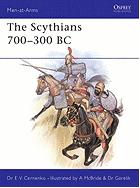
Author: E.V. Cernenko, Title: The Scythians 700-300 BC, Publisher: OspreyPublishing, Date: 1989, ISBN: 0850454786
See colour plate F from the above book shown below:
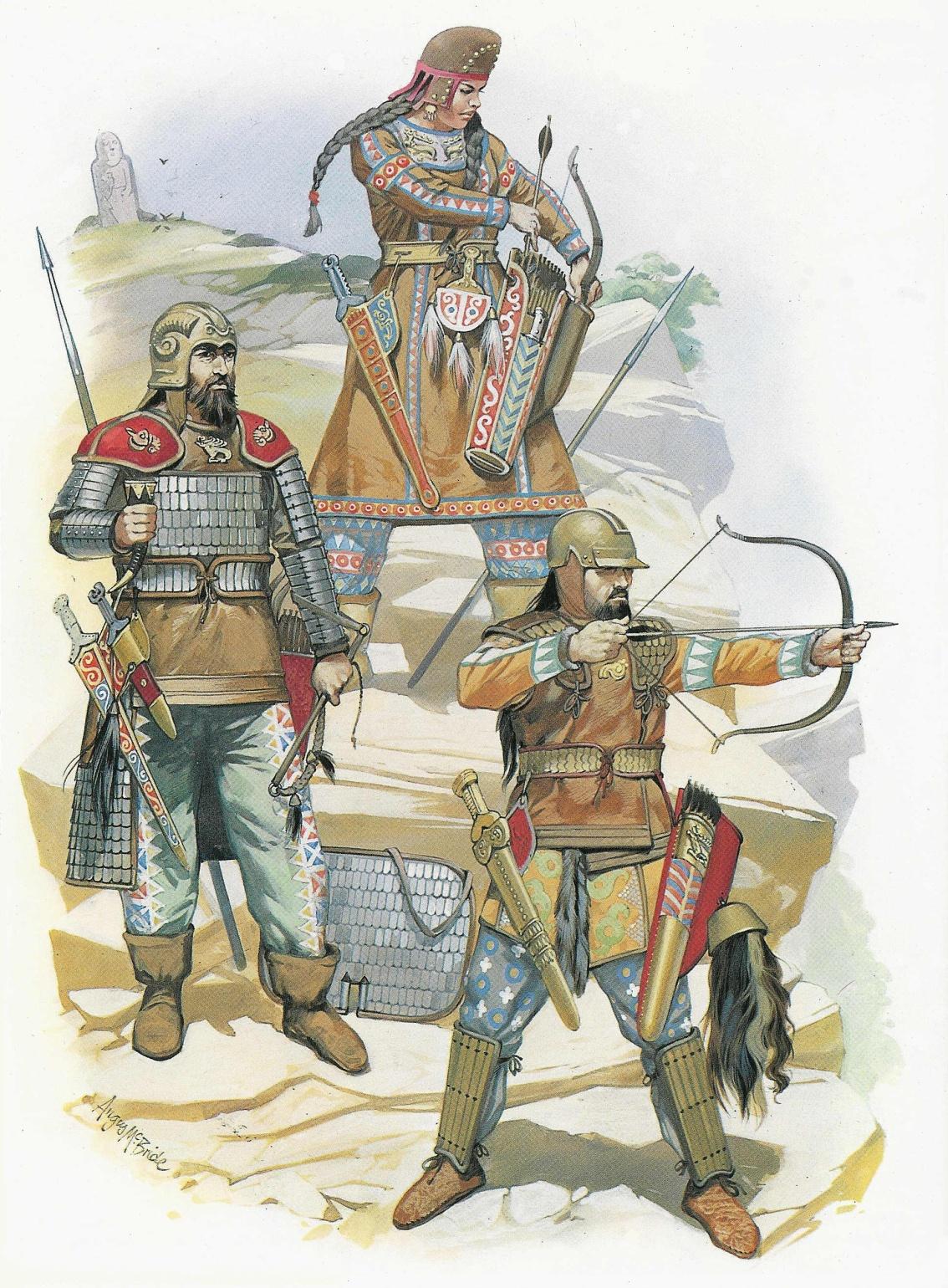
A reconstruction by Cernenko and Gorelik of the north-Iranian Saka or Scythians in battle (Cernenko & Gorelik, 1989, Plate F). The ancient Iranians (those in ancient Persia and the ones in ancient Eastern Europe) often had women warriors and chieftains, a practice not unlike those of the contemporary ancient Celts in ancient Central and Western Europe. What is also notbale is the costume of the Iranian female warrior – this type of dress continues to appear in parts of Luristan in Western Iran. it is clear that Dr. Fox has simply invented his own interpretation of Iranian female dress of the ancient eras.
Once you have consulted Professor’s Cernenko’s book, it will be evident how flawed the costume design is, not to mention the colors. None of the reconstructions by Professor Gorelik, which Cernenko has consulted, show any type of face masks for ancient Iranian women. Ancient Iranian women, who were found in military, religious and political leadership roles, simply did not wear such attire during courtship, marriage or everyday duties. Already as noted before, Fox has chosen to be extremely selective as to his “vision” of Iranian women – note the picture of the Iranian woman from Luristan, a region with a strong Scythian (North Iranian) heritage:
Iranian woman from the Luristan region of Western Iran. Lur women were known for their combat and equestrian skills well up to the post-Islamic times of Karim Khan Zand.
It is not clear why Professor Fox has chosen a Burka-like face mask for Roxanna at Alexander’s wedding. Variants of this face mask are present in Afghanistan today, mainly the result of former Taliban rule and very conservative Pashtoon tribal society, which very strongly identifies itself with the culture of ancient Arabia.
Perhaps even more disturbing is Fox’s Eurocentrist portrayal of Iranian women as passive pawns in society – historically and culturally this is pure myth. Readers are invited to witness the picture below:
Iranian women from Malayer (near Hamedan in the northwest) engaged in target practice in the Malayer city limits in the late 1950s. The association between weapons and women is nothing new in Iran; Roman references for example note of Iranian women armed as regular troops in the armies of the Sassanians (224-651 AD). Western media and Eurocentrist academics have worked hard to block such images from appearing in mainstream Western culture.
Even more interesting is the “Arabian Nights” portrayal of an Achaemenid harem. Harems certainly existed in Persia and the later Roman and Byzantine courts, however the specifically “Arabian” appearance accdored to the Achaemenids is simply consistent with the Hollywood tradition of portraying Iranians as Arabs.
Iranian acresses Saye Yabandeh who was a winner at the 11th Annual Beverly Hills Film Festival of 2011(left) and Nazanin Afshin-Jam (right) an international model and actress, 2003 Miss World Canada winner and ranked second in Miss World contest in 2003. Despite the large pool of highly intelligent, educated and talented Iranian actresses , Hollywood often discriminates against these, especially when producing “historical” or “true story” pictures related to Iran and/or Iranians.
For more on the Iranian women in history and culture consult:
Interestingly, the movie portrays the “Persians” with Arabian styles of music and dance. This portrayal is not based on factual information; it is a Hollywood portrayal. From the scant evidence that exists, we do know that one of the Persian styles of dance strongly resembled the dances of the Kurds of today; a style also seen in western Turkey, Greece and the Balkans today. As for music, we have no notes or scales from that period, and “Arab music” as we know it today simply did not exist at that time; it is a much later creation. Arabian music can trace its beginnings to the Bedouin tribes of Arabia – it later borrowing heavily of Sassanian and Greek scales (after the 7th century AD).
These errors are enough to question the historical accuracy of the Alexander picture. It seems that when it comes to Iranians and their identity, history is easily “re-written” for the benefit of popular entertainment. As Professor Fox has duly noted in an interview interview with Archeology Today, the movie “could not totally depart from audiences’ expectations“. The “audience” undoubtedly has “expectations” as to what Iranians “should” look like.
Given Professor Fox’s rudimentary knowledge of Persia’s anthropology, you may wish to refer to:
Author: J.P. Mallory, Title: In Search of the Indo-Europeans: Language, Archeology and Myth, Publisher: London: Thames & Hudson, Date: 1989., ISBN: 0-500-27616-1
Read from the above Mallory book, pages: 9-23, 48-56, 78, 266-272. Related to this topic, read also:
For color reconstructions of ancient Iranians see:
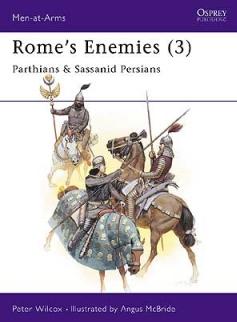
Author: Peter Wilcox, Title: Rome’s Enemies (3): Parthians and Sassanid Persians, Publisher: OspreyPublishing, Date: 1986, ISBN: 0850456886
Read also the book below:
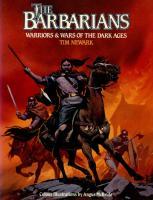
Author: T. Newark, Title: The Barbarians: warriors and Wars of the Dark Ages, Publisher: Concord Publications Company, Date: 1998, ISBN: 9623616341
From the above book see Page 7 (the Saka – ancestors of today’s Lurs and Seistanis) and 30 (ancestors of the Ard-Alan).
Iran today is very much a genetic tapestry that includes blondism in Northern and Western Iran (e.g. Parsabad, or Talysh), as well as among Iranian peoples such as Lurs, Azeris, Mazandaranis, Kurds and Boyer-Ahmadis. Iran is also home to Arabians in Khuzistan and the Persian Gulf coast, Asiatic Turcomens in the Northeast, as well as the Baluchis near Pakistan, who have a strong Dravidian admixture. You may wish to read the very thorough and precise compendium of Iranian peoples today below:

Title: The Archaeology of Western Iran: Settlement and Society from Prehistory to the Islamic Conquest , Editor: F. Hole, Publisher: Washington, D.C. Smithsonian Institution Press, Date: 1987, ISBN: 0874745268
See also the below volume:
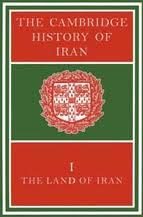
Title: The Cambridge History of Iran: Volume 1, The Land of Iran, Editor: W. B. Fisher, Publisher: Cambridge: Cambridge University Press, Date: 2004, ISBN: 0521069351
These books (especially the Cambridge History of Iran series) will provide a more informed and less misleading analysis of Iran’s anthropological history than that offered by Professor Fox.
As seen in this commentary, Hollywood portrayals of Iranians are in stark contrast to reality. Until the Arabian arrivals in the 7th century AD, the majority of Iranians would have looked no different from the Greeks or Romans. Greek and Roman references to classical Iranians do not refer to them as different in the “physical” sense; differences lay mainly in manner of government, philosophy and to a lesser extent, mythology. The Azadan nobility of the Parthian and Sassanian Savaran (elite cavalry), more than 500 years later than Alexander, are described by Peter Wilcox as “…very similar to the Celts…strikingly similar to Northwest Europeans…” (p.6). There are still many short stories in Southern Italy today which accurately portray the temperament and appearance of the Persians as they would have appeared in antiquity.
Concluding Notes
Despite the powerful historical revisionism of a number of mainly northwest European historians such as Edward Gibbon (1737-1794) or the aforementioned Fallmerayer, the Greco-Roman world and Persia have profoundly influenced each other in areas such as architecture, the arts and crafts, the sciences and medicine, mythology, military and engineering technologies. While true that one can find a number of anti-Persian references in Greco-Roman sources, these were in the context of wars that broke out between these powers. A perfect example of this is how the movie explicitly shows Aristotle deriding the Persians as inferior to the Greeks. Modern Greeks place this in context and see Aristotle as expressing the political climate of his day. Iranians are very well liked and respected in Greece and are seen as the heirs of a great civilization. Alexander himself came to greatly appreciate the Iranians and their culture. It is a shame that the movie did not show Alexander as paying homage to the tomb of Cyrus the Great.
As noted previously, Greco-Roman historians who were prepared to acknowledge and highly praise the Persians (e.g. Xenophon, Plutarch, etc.). Today’s popular culture, education systems and movie entertainment industries in particular, seem to be providing a very selective and distorted view of Persia with respect to antiquity. Many are simply not aware (or wish not be aware) of Persia’s importance and status in antiquity let alone her major contributions to world civilization.
Ancient Greeks, Romans and Persians had much more in common with each other than with the relatively unsophisticated Celtic and Germanic peoples who were roaming the Northern European forests. For an incisive discussion of these little discussed topics consult:
Title: Calabria, L’enigma Delle Arti Asittite: Nella Calabria Ultramediterranea, Author: Nik Spatari, Publisher: Italy: MUSABA, Date: 2003, ISBN: 8887935300
The above book by Spatari has not been translated from Italian to English. Still an excellent read, especially with the illustrations. See also:
Title: In Search of Zarathustra: The First prophet and the Ideas that Changed the World, Author: Paul Kriwaczek, Publisher: Weidenfeld & Nicolson, Date: 2003, ISBN: 0297646222
I look forward to the day when we will see blockbuster movies of Shapur I (241-272) who defeated three Roman emperors in his lifetime and destroyed a third of Rome’s armies. Even more dramatic would be to see movies made of the life and times of figures such as Zarathustra, Cyrus the Great, Darius the Great, General Shahrbaraz, Mani, Mazdak, Babak, Abu Ali Sina, Omar Khayyam, Shah Ismail and Nader Shah.


